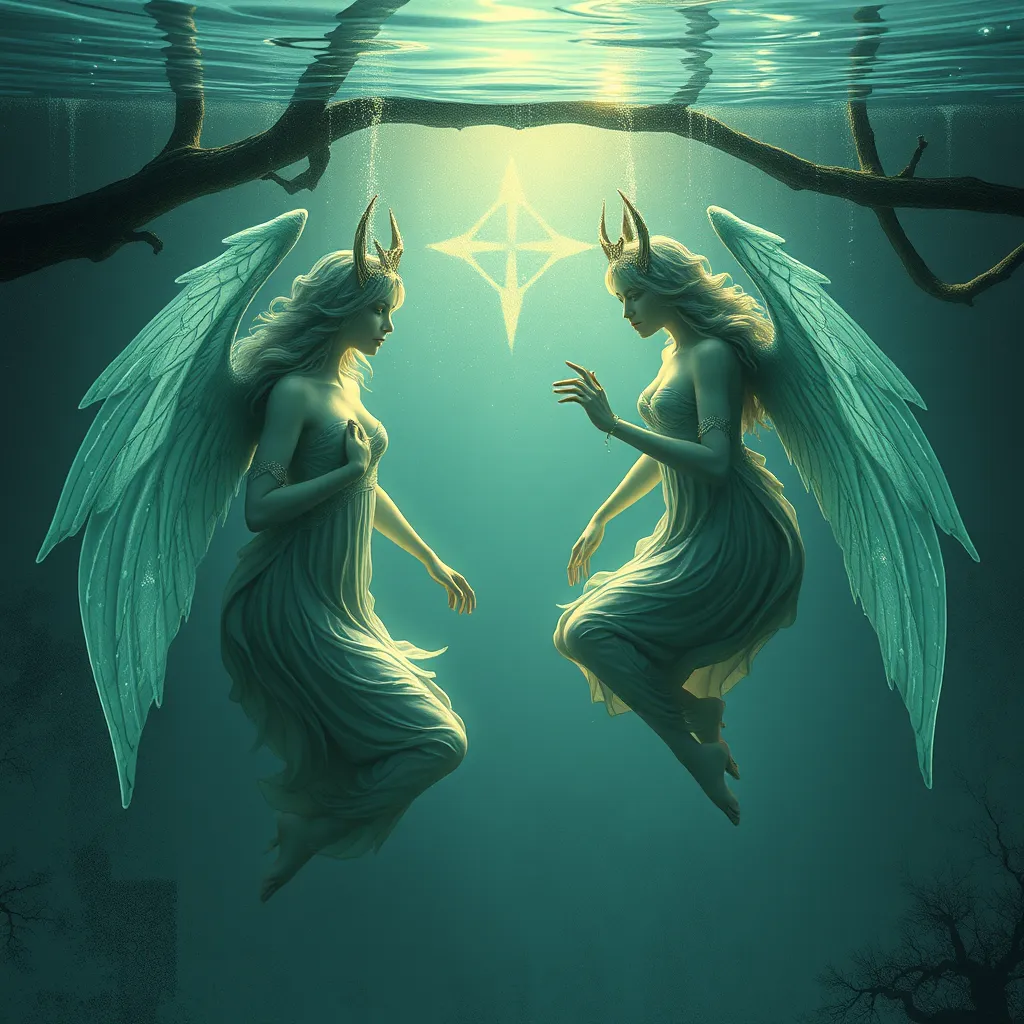Beyond the Mermaid: Unmasking the Selkie’s Unique Identity
I. Introduction
Maritime folklore is rich with a variety of mythical creatures that captivate the imagination and speak to the human experience. Among these enchanting beings is the Selkie, a creature of both land and sea, often overlooked in favor of more widely recognized figures like mermaids. The Selkie legend, with its deep cultural significance, embodies themes of transformation, love, and the struggle for identity.
This article aims to delve into the unique identity of the Selkie, unearthing its origins, characteristics, and the profound themes that enrich its stories. By exploring the Selkie beyond common misconceptions, we can gain a deeper understanding of its role in folklore and its relevance in contemporary society.
II. The Origins of the Selkie Myth
The Selkie myth has its historical roots in both Celtic and Norse mythology. These tales often depict Selkies as seals that can shed their skins to become human. The myth is predominantly associated with the coastal regions of Scotland, Ireland, and the Norse territories, where communities have long shared stories of these enigmatic beings.
Over time, the Selkie story has evolved, influenced by the cultures that embraced it. While early tales focused on the mystical aspects of Selkies, modern interpretations often emphasize the emotional and relational dynamics between humans and these creatures, showcasing the enduring power of folklore to adapt and resonate through generations.
III. Selkie Characteristics and Attributes
Selkies are typically described as creatures that can transform from seals into beautiful men and women when they shed their seal skins. In their human forms, Selkies are often depicted as having a captivating allure, embodying the beauty and mystery of the ocean.
Common traits and behaviors attributed to Selkies include:
- Melancholy and longing for the sea.
- Strong attachments to their seal skins, which symbolize their true identity.
- A tendency to form deep emotional connections with humans, often leading to complex relationships.
The symbolism of seals in various cultures often reflects themes of transformation and the balance between freedom and captivity, which plays a significant role in the Selkie legend.
IV. Selkie Tales: Themes and Variations
Selkie folklore features several common narrative arcs, often revolving around themes of love, loss, and longing. These stories typically involve a human who captures a Selkie’s skin, thus binding the Selkie to the land and to them. However, the longing for the sea remains, leading to heart-wrenching conflicts between love and freedom.
Some of the prevalent themes in Selkie tales include:
- The struggle between human emotion and the call of the ocean.
- The transient nature of love and the inevitable return to one’s true identity.
- The exploration of sacrifice, as Selkies often give up their freedom for love.
When compared to other maritime myths, such as mermaids and sirens, Selkies offer a more nuanced exploration of identity and the duality of existence, often portraying a more sympathetic and relatable character.
V. The Selkie as a Symbol of Duality
The Selkie embodies a unique duality, representing both the land and the sea. This dual nature invites an analysis of belonging and identity within the Selkie narrative. Selkies often find themselves torn between their human lives and the ocean, reflecting the struggle many face in balancing various aspects of their identities.
Key points of reflection include:
- The concept of belonging: Selkies are at home in the sea but often feel a pull toward human relationships.
- Identity conflict: The shedding of the seal skin symbolizes the loss of one’s true self for societal acceptance.
- Personal freedom vs. societal expectations: Selkies represent the tension between following one’s true nature and conforming to human expectations.
VI. Modern Interpretations of the Selkie Legend
In contemporary literature and media, the Selkie legend has seen a resurgence, inspiring various adaptations in books, films, and art. Modern interpretations often explore the emotional depth of Selkie stories, allowing audiences to connect with the themes of identity and freedom on a personal level.
Noteworthy representations include:
- Children’s books that introduce Selkie lore to younger audiences.
- Films that reinterpret the Selkie myth within modern contexts, often focusing on themes of belonging.
- Artistic representations that capture the ethereal beauty and sadness of Selkies.
This resurgence highlights a growing cultural interest in folklore and mythical creatures, emphasizing their relevance in understanding contemporary human experiences.
VII. The Selkie’s Role in Environmental Narratives
The Selkie legend also plays a significant role in environmental narratives, particularly in the context of ocean conservation. As creatures deeply connected to the sea, Selkies can symbolize the fragility of marine ecosystems and the impact of climate change.
Key aspects include:
- The Selkie as a metaphor for the plight of marine life threatened by human activity.
- Community initiatives inspired by Selkie stories that promote environmental awareness and conservation efforts.
- The connection between folklore and ecological stewardship, encouraging a deeper appreciation for the ocean.
VIII. Conclusion
In summary, the Selkie’s unique identity and cultural importance extend far beyond mere myth. Through its rich tapestry of stories, the Selkie embodies themes of duality, longing, and the search for belonging. As we explore the Selkie’s narrative, we uncover valuable insights into our own identities and relationships with the world around us.
As interest in folklore continues to grow, the Selkie legend remains a poignant reminder of the complexities of love, identity, and our connection to nature. We invite readers to explore and celebrate these timeless tales, fostering a deeper understanding of the myths that shape our cultural landscape.



